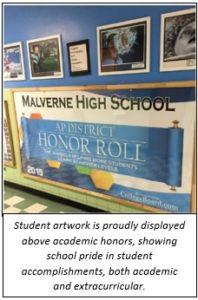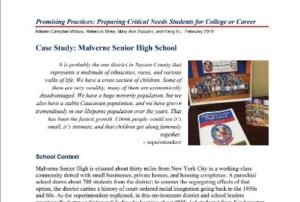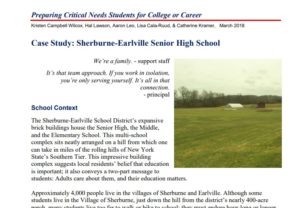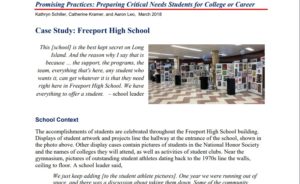Prioritizing Out-of-School Time to Expand Learning and Enhance Healthy Development
By Hal A. Lawson
As the 20th Century closed, the Carnegie Corporation of New York and its Council on Adolescent Development published a clarion call to action, A Matter of Time: Risk and Opportunity in the Nonschool Hours. This report describes an invisible but consequential competition for young people’s time and attention. It also emphasizes desirable outcomes that are within reach as well as undesirable outcomes that stem from inaction.
Educators, community-based social and health service providers, parents/caregivers, and local community leaders have much to gain by prioritizing young people’s learning and healthy development during out-of-school time. And they are particularly effective when they organize and mobilize for collective action. School-family-community partnerships, facilitated by boundary-bridging leaders, are a practical necessity. So are data systems that provide profiles of “the whole child”—not merely “the academic student.”
In the ensuing decades this pathbreaking report has gained importance, particularly as the limitations of school systems that stand alone and focus primarily on the school day become apparent. The same question that launched the report is important now: Why should educators prioritize and seek influence over young people’s out-of-school time?
The Importance of Prioritizing and Facilitating Out-of-School Time
One cluster of reasons derives from America’s changing demographic profiles. For example, Kids Count, the Annie E. Casey Foundation’s national data report, emphasizes that the fastest growing segment of the birth to age 5 population represents children traditionally served least effectively by public schools and community agencies.
Other data indicators follow suit. For example, at least 21 percent of all young people in the United States are challenged by poverty and its correlates, and culturally diverse young people whose parents have not completed high school are disproportionately represented in this group.
Meanwhile, 13.7 million single parents are responsible for raising 22.4 million children—approximately 27 percent of today’s children under age 21. Four influential developments are hidden in these numbers: (1) Multi-lateral demands on parents/caregivers, including time constraints that impede parent involvement in school, including PTA membership; (2) “Latch-key kids” who are home alone after school; (3) Older siblings’ responsibilities for child care and income-supplementing jobs; and (4) Child care assistance when schools are closed.
Another cluster of reasons for educators to become involved in students’ out-of-school time is connected to educator priorities such as on-time arrival, homework completion, summer learning loss, student readiness to engage and learn, dropout prevention, and academic achievement. All are influenced and in part determined by how, where, and with whom young people spend their out-of-school time.
Partnering through Out-of-School Time Initiatives to Improve Youth Outcomes
Mindful of growing needs of students as well as manifest risks associated with doing little or nothing — and seeking to maximize timely opportunities to gain assistance, resources and supports — pioneering educators and their community partners are assuming joint leadership roles and responsibilities for young people’s out-of-school time. For example, they are encouraging and rewarding participation in co-curricular and extra-curricular activities. They are developing after-school programs, some of which perform double-duty as child care for working parents. They communicate and collaborate with leaders of community agencies such as Boys and Girls Clubs, YMCAs, libraries, and museums, and they invite community youth development leaders to use school facilities and share their knowledge of the young people in their care with educators.
Some of the best out-of-school time initiatives are aligned with two national child/youth development entities: Communities That Care and the Search Institute. Data-informed and -driven improvement initiatives gain new meaning and achieve higher impact when one of these organization’s planning frameworks, data priorities, and resources are employed to support students, assist teachers, augment school improvement, and gain opportunities for college-and-career readiness. A symbiotic relationship can develop: The school’s academically oriented data systems are an asset for community leaders, just as community data systems benefit educators.
The Power of “Anytime, Anywhere, Anyone” Learning
Today’s digital age mantra—“anytime, anywhere, anyone learning”—signals the importance of two priorities emphasized by out-of-school time leaders and youth development advocates:
- Connected learning prioritizes communication and coordination with classroom teachers.
- Complementary learning prioritizes alternative kinds of learning, especially ones difficult to offer during the school day. What some experts call social-emotional learning is a special example, and it dovetails with school-based and school-linked co-curricular and extra-curricular activities.
Both kinds of learning offer a four-component dividend: (1) They support students during out-of-school time; (2) They are invaluable resources for teachers and student support professionals, who often work in relative isolation; (3) They facilitate the development of beneficial peer networks for young people, perhaps extending to their parents and families; and (4) They often include project-based learning and formal internships in both private sector and public sector organizations that contribute to college and career readiness.
At a time when experts such as Richard Elmore remind us that the future of learning is not the same as the future of schooling, and too many educators are asked to “do it all, alone” in stand-alone schools that focus narrowly on academic achievement, out-of-school time initiatives provide positive youth development resources, enable educators to capitalize on connected learning mechanisms and complementary learning opportunities, and assist families in supporting their children’s social and emotional learning and development.
The Out-of-School Time Initiative of the national Alliance for a Healthier Generation is a treasure trove for educators, parents/caregivers, community partners, and youth development advocates. Closer to home, a recent NYKids study provides examples of promising practices and timely innovations.
Out-of- School Time Learning in Positive Outlier Schools
The NYKids study of college and career readiness found that educators in schools with unusually better student outcomes—called “positive outliers”—emphasize providing learning opportunities that go beyond a rigorous academic curriculum. Leaders in these schools offer students opportunities to engage in activities outside the classroom through involvement in various activities such as team sports, musical performance and theater, creative arts, and community service.
For example, at Malverne Senior High School, educators emphasize supporting student accomplishments, both academic and extracurricular.
We want to be that destination school that has rigorous academics, really preparing kids. But I’d like to get rid of rank, quite honestly, so that kids are taking classes that are of interest to them, and they’re thinking about their talents, and they’re thinking about careers, and they’re thinking about college. I want that whole package there. We also have the sports, and we have the theater, and we have technology club, . . . science Olympiads. — Malverne principal
Positive outlier schools also demonstrate that out-of-school time can serve as a way to connect youth to school and broader communities. At Sherburne-Earlville, teachers and administrators reported that extracurricular opportunities help students make friends and build community with peers.
It [extracurricular involvement] makes them [students] part of a community; it makes them connect; it gives them people skills. — Sherburne-Earlville teacher
Freeport’s educators agree. They believe that students’ service learning complements their academic learning.
We’re really big on community service. We want them to really look at opportunities outside right in their community where they can be of help. –Freeport teacher
To learn more about how educators in other schools with unusually better student outcomes make the most of out-of-school time to improve mutually-beneficial outcomes, be sure to read other case studies from the NYKids College and Career Readiness Phase 1 study. In addition to the three schools mentioned above, the promising practices at Alfred-Almond, Crown Point, Maple Grove, and Port Chester high schools are inspiring and offer more examples of all educators and their partners can do and achieve once they prioritize out-of-school time.





